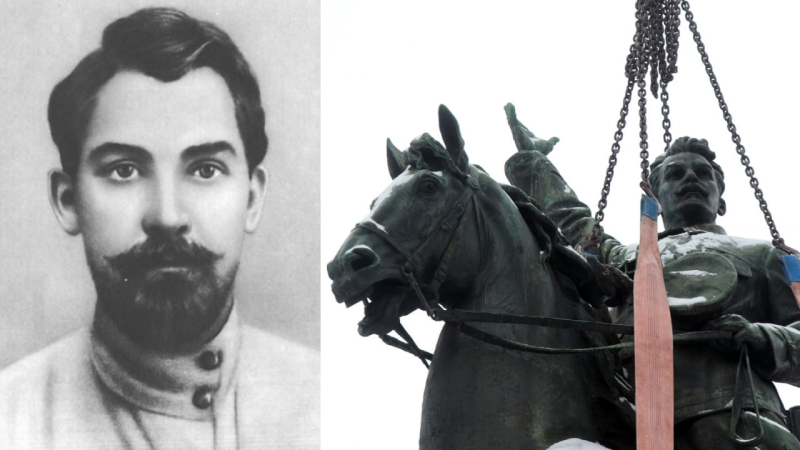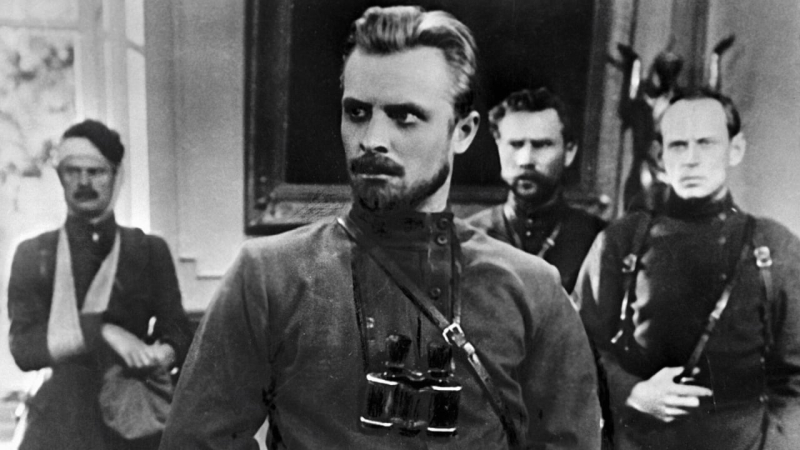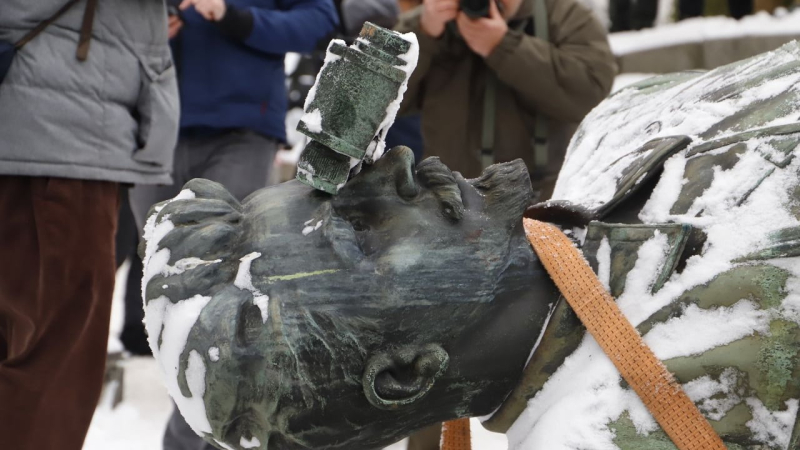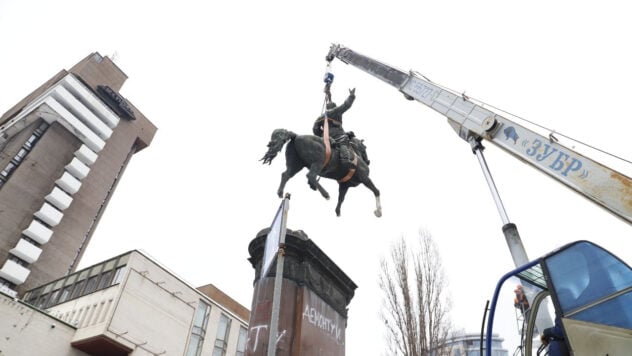In Kyiv on December 9, a monument to one of the Bolshevik leaders Nikolai Shchors was dismantled. It stood on the capital's Shevchenko Boulevard for almost 70 years.
The dismantling of the bronze statue began at dawn and lasted 6 hours. The monument will be kept in the Antonov State Aviation Museum.
Debates about its demolition have been going on for a long time, but they resumed more actively after the Revolution of Dignity. In 2016, it was even protected by security forces from unauthorized demolition. But in March 2017, someone sawed off a horse’s leg at the monument.
Now watching
After the full-scale invasion, activists left inscriptions on the monument about what they thought about this figure: Executioner, Murderer, Fought against the UPR, Dismantle, Demolish me completely. Subsequently, the sculpture was covered on all sides with a yellow and blue banner.
Who is Nikolai Shchors?
Nikolai Shchors was born on the territory of modern Chernigov region in the family of a railway worker. Later he graduated from the Kyiv military paramedic school. He participated in the First World War, but due to consumption he was demobilized in 2017.
Soviet propaganda tried to mold him into a “Ukrainian” commander, but, as historians note, he himself probably did not identify himself as a Ukrainian. His language of communication was Russian, and to serve “the Tsar and the Fatherland” he joined the Russian army voluntarily.
In the winter of 1918, after the conclusion of the Brest-Litovsk Peace Treaty, Shchors joined the Bolsheviks. He began to form the so-called Ukrainian Soviet military units.

Photo: Wikipedia, UNIAN
In the same year in September, the Bolsheviks appointed him commander of the Ukrainian revolutionary regiment named after Comrade Bohun, and in October they promoted him to commander of one of the brigades of the Bohun and Tarashchansky regiments of the 1st Ukrainian Soviet Division.
Do you want to relax? Come to Facti.GAMES!
Shchors was married to the sadistic revolutionary Frumi Khaikina, who in Unecha (Bryansk region, Russia) headed the border detachment of the Cheka. After fierce battles for the town of Klintsy, Shchors' troops entered there. It is known that his wife brutally dealt with locals who supported the UPR. It was on her instructions that many people were shot.
In February 1919, the Bohunsky regiment under the command of Shchors occupied Kyiv. He was appointed commandant of Kyiv, and after that the Bolsheviks began another wave of terror. He subsequently became the commander of the 1st Ukrainian Soviet Division, which occupied Berdichev, Zhitomir and several other Ukrainian cities.
Shchors died in August 1919 in a battle with the Ukrainian Galician Army. There is also a version that Shchors was actually killed by a Bolshevik agent on the orders of Trotsky — as a “unreliable element”. And there is almost a mythical version that he was killed allegedly for his pro-Ukrainian position.
Propaganda made Shchors a “legend”
Soviet propaganda used the image of Shchors as a fighter for “Soviet Ukraine”. Little is known about a significant part of his life, and his death has several versions. Historians do not find any confirmation of Shchors’s alleged meetings with the organizer of the Red Terror Vladimir Lenin, partisan past in Siberia or other military victories.
The image of Shchors was brought to fame by the film of the same name by Ukrainian director Alexander Dovzhenko, which was commissioned by dictator Joseph Stalin. This was preceded by harassment of the director and surveillance of him by the NKVD. Then Dovzhenko wrote a letter to the dictator with a request to “protect and help him develop creatively”.
Tyrant ordered a work from the director Aerograd — about the bright future of the Chukchi. The director was awarded the Order of Lenin for the film, and Stalin said at the presentation: You have a duty — Ukrainian Chapaev. You know Shchors . Stalin personally approved actor Evgeny Samoilov for the role of Shchors.

Evgeny Samoilov as Shchors. Still from the film Shchors (1939), directed by Alexander Dovzhenko
But not cinema alone. The Kremlin also instructed other artists to glorify Shchors almost to the point of legend and greatness. Boris Lyatoshinsky wrote an opera about him based on a libretto by Rylsky and Kocherga, and Semyon Sklyarenko published a three-volume set The Way to Kyiv. They wrote songs and poems about him, sculpted sculptures, renamed settlements, streets and the like after him.
Monument to Shchors in Kyiv and its dismantling
The idea of installing a monument to Shchors also belonged to Stalin, but the bronze sculpture was installed after the death of the dictator. The authors of the monument were sculptor Mikhail Lysenko, Nikolai Sukhodolov and Vasily Boroday.
In the place where the monument to the leader of the Bolsheviks was erected, in 1872-1926 there was a monument to Alexei Bobrinsky — entrepreneur and philanthropist, one of the founders of the sugar industry. It was dismantled by the Soviet occupiers in 1926 and later destroyed.

The dismantled monument to Shchors in Kiev. Photo: KSCA
In April 2023, the Kyiv City Council decided to remove busts, memorial objects and monuments associated with Russia and the Soviet past from public space. The list of recommended ones included a monument to Shchors.
Later in November, the Cabinet of Ministers decided to dismantle the monument to Shchors, in particular, it was deprived of its protective status. On December 9, 2023, it was dismantled in the morning. For now, the place of the monument will be free.

